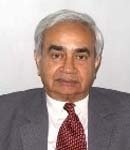The Hague Nuclear Security Summit: Evaluating Major Achievements
28 Mar, 2014 · 4357
PR Chari provides a critique of the major outcomes
That the third nuclear security summit meeting could be held as scheduled in the Hague on 24-25 March, attended by 53 nations, must be deemed a minor miracle, considering the rapidly deteriorating American-Russian relationship over the crisis in Crimea. It revealed that both countries appreciate the reality that the incipient threat of nuclear terrorism transcends their bilateral tensions and rivalries and requires a concerted effort by them to strengthen global nuclear security.
Taking account of the achievements in earlier Summit meetings viz. Washington (2010) and Seoul (2012), what was expected in the Hague summit? The danger of nuclear terrorism had been recognized in Washington, and the world leaders present had agreed to cooperate in protecting their dangerous nuclear materials by jointly and severally improving nuclear security practices. In Seoul, the participants agreed further to secure their radiological sources that can be fashioned into ‘dirty bombs’ capable of causing panic and disruption. A notable success achieved over the intervening years is that the number of countries possessing weapons usable nuclear materials has decreased from 32 to 25. Some 12 other nations have reduced their inventories and improved their security arrangements. In a significant step to improve the atmospherics before the Hague Summit, Japan has agreed to let the United States take charge of its inventory of some 700 pounds of weapons-grade plutonium and a large quantity of enriched uranium. Canada, too, announced that it had returned some highly enriched uranium in its possession to the US. Belgium and Italy also announced they had shipped out HEU and plutonium to the United States for down-blending into less proliferation-sensitive materials.
Against this encouraging backdrop what were the priorities set before the Hague Summit? Key participants like the United States, Netherlands, and South Korea wished to press for reduction in the usage of highly enriched uranium and plutonium in nuclear reactors. Besides they wished the IAEA to undertake more frequent reviews; ensure the registration and protection of radioactive materials; enhance the role of industry in nuclear security matters; and increase transparency on steps taken by states to secure their nuclear facilities and materials. Another major objective was to phase out existing plutonium separation facilities and place a moratorium on new facilities; apart from gaining more adherents to implement IAEA guidelines for protecting nuclear materials.
What were the major achievements of the Hague Summit? In a Joint Statement issued by 35 participating nations—significantly, Russia, India and Pakistan are missing—they pledged to continue improving their nuclear security regimes by conducting self-assessments; hosting periodic peer reviews and acting upon their recommendations with celerity; and ensuring that management personnel concerned with nuclear security were competent. Additionally, these States would contribute to developing IAEA nuclear security guidance documents; provide technical support and assistance to other States; maintain and improve domestic and regional training activities; share good practices through seminars, workshops, and table top / field exercises; promote information exchanges while respecting confidentiality; and provide nuclear security experts to the IAEA. In addition, participating states were enjoined to develop and enhance cyber security relating to nuclear facilities; maintain emergency and contingency response and mitigation capabilities; make financial contributions to the IAEA Nuclear Security Fund; promote research and development on nuclear security technologies and disseminating their results; promote a nuclear security culture for personnel involved with nuclear security; support or participate in developing the World Institute for Nuclear Security training activities; and improve cooperation with nearby States to improve international and regional nuclear security.
Besides, 23 participating nations stated their intention at the Summit meeting to comply with international guidelines regarding the security of the most lethal "Category I" radiological sources contained in the IAEA’s "Code of Conduct on the Safety and Security of Radioactive Sources." An especial achievement was that some participants proffered "gift baskets"—meaning voluntary pledges that go beyond the Summit declarations. These included as noted by Harvard expert Matthew Bunn, “ checking the trustworthiness of people with access to radiological sources, providing a rapid response to any attempt to gain access to them (and carrying out regular exercises of that response capability), and developing a national-level response plan based on an in-depth assessment of the threat " This gift basket also identified "best practices" like undertaking multiple checks before allowing a person access to sensitive materials, and installing monitoring systems equipped with "redundant and timely alarms … sent to a centralized monitoring facility." Besides, five countries led by Japan, and including France, South Korea, the United Kingdom and the United States, have signed onto another gift basket relating to transport security for nuclear and radiological materials. They had endorsed this “ gift basket” at the 2012 Security Summit in Seoul, and have now agreed to form a working group that would discuss improvements in the security of nuclear materials during transport.
A fourth Summit meeting is planned for Chicago in 2016, returning this process to the United States where it began in 2010. Hopefully, there will be more significant progress to report at that assembly.


